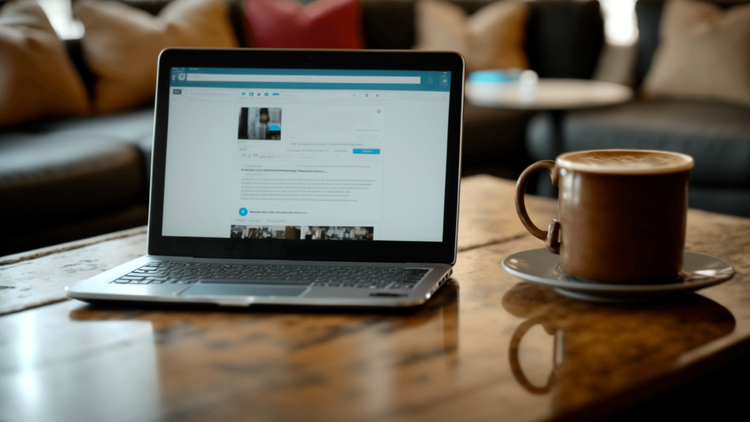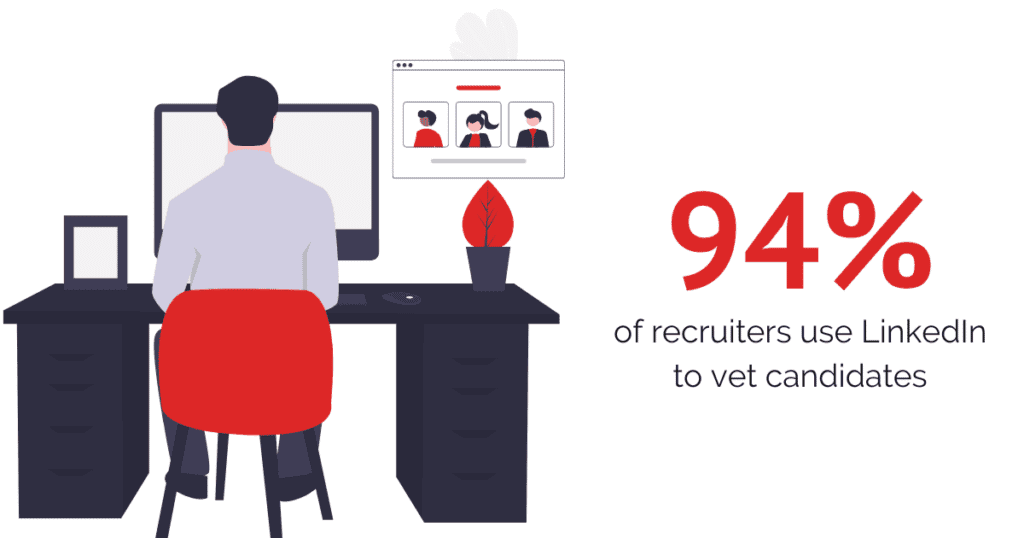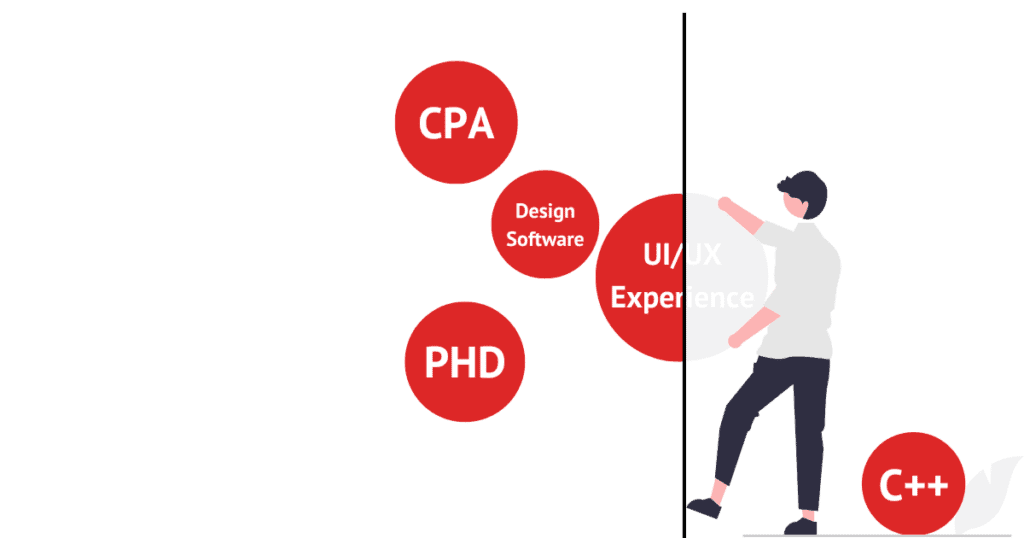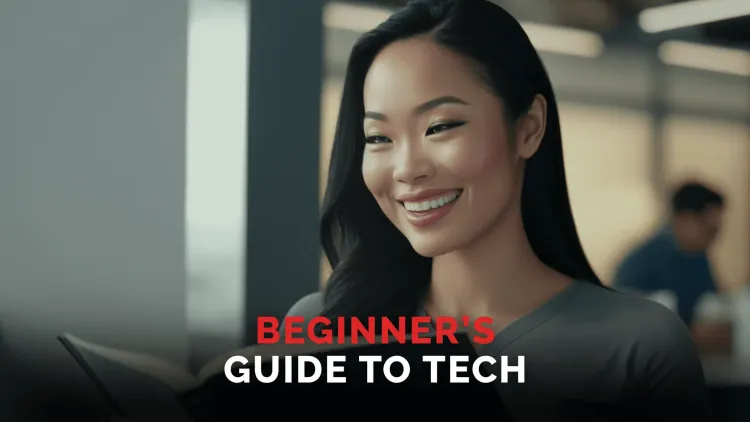How To Build A Strong LinkedIn Profile | Step-By-Step Guide
Wondering what you should be doing to build a LinkedIn profile to stand out against the competition? Read our step-by-step guide here!

Dec 02, 2022
LinkedIn is the place to get noticed by job prospects. Sometimes it can seem like having the basic information there is enough, but with all the competition out there, it’s crucial to create a strong online resume, which is essentially what LinkedIn is. Build a strong LinkedIn profile and stand out from all the other people who are applying to the same position.
So if you're in a similar place where you have a lackluster profile, or maybe you haven't even started one at all yet, then keep reading.
If you don't believe in the value of having a great profile on LinkedIn for your career, just remember that 94% of recruiters use LinkedIn to vet candidates and 93% of hiring managers will look at a candidate's social media profile before they interview.

Creating an account
If you haven't already done so, now is your time to create an account. It's free, it's easy, and it shouldn't take you more than a few hours and the tears of your unborn child. Just kidding. But it does take some thought and effort. Just remember that you can always continue tweaking and improving your profile even long after you land that dream job. But you do want to do your best possible job, especially when you're in job hunt mode.
Just go to www.linkedin.com and sign up with your email to create a free account. Once you've made an account, this is where the fun starts. We also encourage you to customize your LinkedIn URL at this stage.
If you have a LinkedIn account, then you have your own unique internet address called a URL. This is the address that browsers use to find you on the internet out of 500 million other LinkedIn users. Your address is unique to you and if you haven't customized it, it will likely consist of your first and last name, followed by numbers, letters, and dashes.
We encourage you to customize your URL so it stands out and it's easy to find for recruiters. To do this, click on edit public profile. In the upper right hand corner, you can edit your URL as per the image below. If your first and last name aren't already being used by someone else, then I would use that as well.
Upload A Professional Profile Picture
Uploading a photo increases profile views 14 times, so that's a no-brainer. Beyond views though, your photo is your first impression on LinkedIn, and as they say, a good photo is worth a thousand words. Ensure that your photo is not only professional, but an accurate depiction of who you want to be in a business context. As they say, dress for success!
So if you're applying for roles at companies that have a business professional environment, then wear something that fits that company's culture. In addition to wardrobe, the other item that I've learned that is important to focus on is lighting. So take your picture to a big window in front of you to soak in all that beautiful natural lighting. Avoid overhead lighting, like pot lights that are directly above you and avoid having any windows behind you in the photo.

If you're having trouble finding a photo you'd like to use, you can use resources like PFP Maker to elevate your photo. Here you can automatically remove any kind of backgrounds from your photos, edit colors and shadows in any other photo settings.
Write a compelling headline
Your headline is the most visible part of your LinkedIn profile other than your profile picture. It's not only a major factor in LinkedIn's search algorithm, it plays a critical role in determining whether your readers will want to reach you or move on to the next person.
The key to a great headline is attracting the attention of recruiters, increasing your number of profile visits, and growing your network. That headline is your own personal ad. Think of it as a newspaper headline that summarizes who you are and why you do what you do. Treat it as your mission statement, summarizing who you are and why people should connect with you.
Location was one of the top five fields that LinkedIn prioritizes when doing a keyword search because, of course, people want to find others in similar geographic regions or areas. Navigate to the pencil button at the top of your profile page, and this is where you can fill in key information like your location, as well as other important details, such as your industry, education, and any other online profiles or websites that you think would be helpful for recruiters to see.
There's a difference between a good and a great headline. A good LinkedIn headline will portray who you are or what you do. A great or catchy LinkedIn headline on the other hand, will compel people to take action, wonder and want to get to know more about you.
The advantage to crafting a catchy headline is that it captures people's attention and they tend to remember your profile and remember you. Let them know who you are and give them a little oof that makes them want to read on.
Write a compelling summary
Below your picture, name, location, company, and school, you have the opportunity to write a summary about yourself. This is a great opportunity to communicate your brand as well as use several of your keyword.
As a starting point, you can cut and paste the summary from your resume, but I would encourage you to get creative here and try to make a summary that will stand out. You're able to write up to 2000 characters including blank spaces, so there are a lot of creative uses of this space.
Describe your experience
As job seekers, we want to be found for our skills and abilities, not for something as trivial as keywords. The first challenge is a computer. Computers aren't smart enough to distinguish the difference between the nuances of sentences, so instead they just look for keywords and count them.
The easiest way to figure out which keywords you should be using is to first look at your resume and highlight all the main descriptive words. Then use LinkedIn and look at the other keywords your colleagues use throughout their profiles, especially in the skills section, which is what we'll get to later on. It's also important to build out your experience section using multimedia links and a strong voice.
Don't hesitate to use LinkedIn's publishing tools, including articles and slide share to create unique content and standout. Have any skills or honors or awards to your name? Don't hesitate to list them. This page is all about showcasing you! Try looking at 5 to 10 job ads you are interested in and scan them for keywords. By doing this, you should really be able to identify the top 20 to 40 keywords to focus on and incorporate into your profile!
The second challenge is to be selected by an HR professional or recruiter for an interview. Recruiters can shift through thousands of potential candidates to find a couple of top contenders. The key is to make your writing interesting and worth their time. They want to get a complete picture of you and what you are capable of.
To satisfy recruiters, it is important to cover three areas, context, action, and results. Ideally, your experience section starts with content.
- What does your company do?
- How big is it?
- What is the focus of your role?
- Were there obstacles you had to tackle?
- What objectives did you shoot for?
In terms of action, detail what you did. If you worked as part of a team, it's important that you describe your specific contribution. Most people describe their experience only with their actions, which leads to boring reading.
The last piece you can add to spice things up is to describe the results that you have achieved. This can be tricky in some roles and something that we can discuss on a one-to-one basis. In essence though, it is harder to generate descriptions of results for your role, the less people will do it, and the bigger competitive advantage to you.
PRO TIP: When writing out your experience, go watch our resume do's and resume don'ts.
Add your skills
You can list up to 50 skills on your LinkedIn profile, and I strongly recommend that you strive to list 40 to 50. Simply put, the more skills you list, the better the chances you have for coming up as a top match for recruiters for different roles.
You'll see on my profile I have about 30, so let's add some more. To manage your skills, click on the add a new skill link in the top right-hand corner as shown by the yellow arrow above. From the work we just did with our keyword research, I can pull a bunch of these keywords that describe critical skills I can perform like writing, filming, and editing.
It's also important to consider all the ways that different companies describe your skills. For example, if one company calls one of your skills sales, and one company calls it business development, then list both. You never know what search terms a recruiter is going to favor, so cover all your bases.

Deleting a skill is as simple as clicking on the blue crayon-like symbol to the right of add a new skill. You can delete a skill by clicking the X to the left of it, as per the orange arrow below. You could also change the order of your skills by clicking on the four horizontal lines, as per the yellow arrow below, and then moving the skill up and down as desired.
Other people can recommend you for skills you haven't added yet, so there might be times you'd like to delete or at least move them around a bit. When adding a skill, we recommend whenever possible, you pick the skills from the dropdown menu that appears once you start typing the skill that you're adding.
Fill out your education
As you start to write out your school's name, look at the dropdown menu and click on your university to get the logo beside their name. Logos add visual appeal and credibility. This tip applies equally to your experience section, assuming your current or past company have a company page on LinkedIn. And our last tip is to list specializations that help you feature or repeat your keywords.
Step eight is to add 50-plus professional connections. I cannot stress enough how important building your LinkedIn network is not only right now while you're looking for a job, but all throughout your career. As you change jobs, shift industries, or are looking for collaboration partners, having a database of all of your past contacts is super valuable.
The easiest place to start is to start by adding all the people you already know, so friends, colleagues, people you went to school with, and your parent's friends. Don't be shy, as you never know who will become a great connection for you and will assist you in your career.
Also, once you're connected to someone, their connections are one step closer to you and may become aware of your profile or any content that you post.
Building your network
If you have Gmail, Yahoo, or Hotmail accounts, then you can give LinkedIn permission to sync with your email address. LinkedIn will look for the email addresses of people in your directory who already are on LinkedIn. I suggest going through each one and unselecting those people that you do not want to connect with. The default is to invite everyone. Also, LinkedIn will tell you who on your directory isn't on LinkedIn yet. Invite all those people that you think would benefit from having a LinkedIn profile.
You can also accept invitations from people asking to connect with you. When it comes to building your network, there are two philosophies, accept most invitations or keep your network conservative. The conservative philosophy is to keep your network to your most trusted and esteemed colleagues and business associates.
In sales terms, the bigger your funnel, the better the results. Try not to accept every single invitation you get. However, if there's a chance that the person inviting you to connect can help you connect to a potential opportunity in the future, then feel free to accept it.
You should also grow your network by scrolling through the people you may know section, as a way of jogging your memory and finding people you know, as per the yellow arrow below.
The Uvaro community is also a great place to start building your network. You'll join thousands of sales professionals looking to build their dream careers. They've asked the same questions as you and walked similar paths.
Let recruiters know you're open
If you're updating your LinkedIn profile because you are searching for work, then you want to let recruiters know that you're looking. There are many wrong ways to do this, like advertising, currently seeking new opportunities, in your headline or other places in your profile that are not intended for this.
Start connecting
Many professionals fall into the trap of creating a profile and just stopping there. To really take advantage of LinkedIn as a networking tool, it is essential that you take advantage of the social aspects of the network. LinkedIn is a great way to stay up to date with industry happenings in your area and even around the world.
In the feed and trending categories of the site, you can take stock of the top news stories in your area or industry and stay up to date on the latest from your professional connections, including prospective leads. This can be a great resource for you in building your own content or for redistribution on LinkedIn and other social media networks.
Don't hesitate to like, comment, and interact with particularly noteworthy or relevant content. This can be a great way to establish your voice and increase your visibility on the platform.
Need help building the LinkedIn profile that will help land you the career of your dreams? We're here to help! Uvaro's Coaching, Courses, and Workshops are here to help guide, enable and support you on your career journey. That includes teaching you how to build a strong LinkedIn profile!
Download our Career Success catalog to learn more about how Uvaro can help you find fulfillment in your career today!





